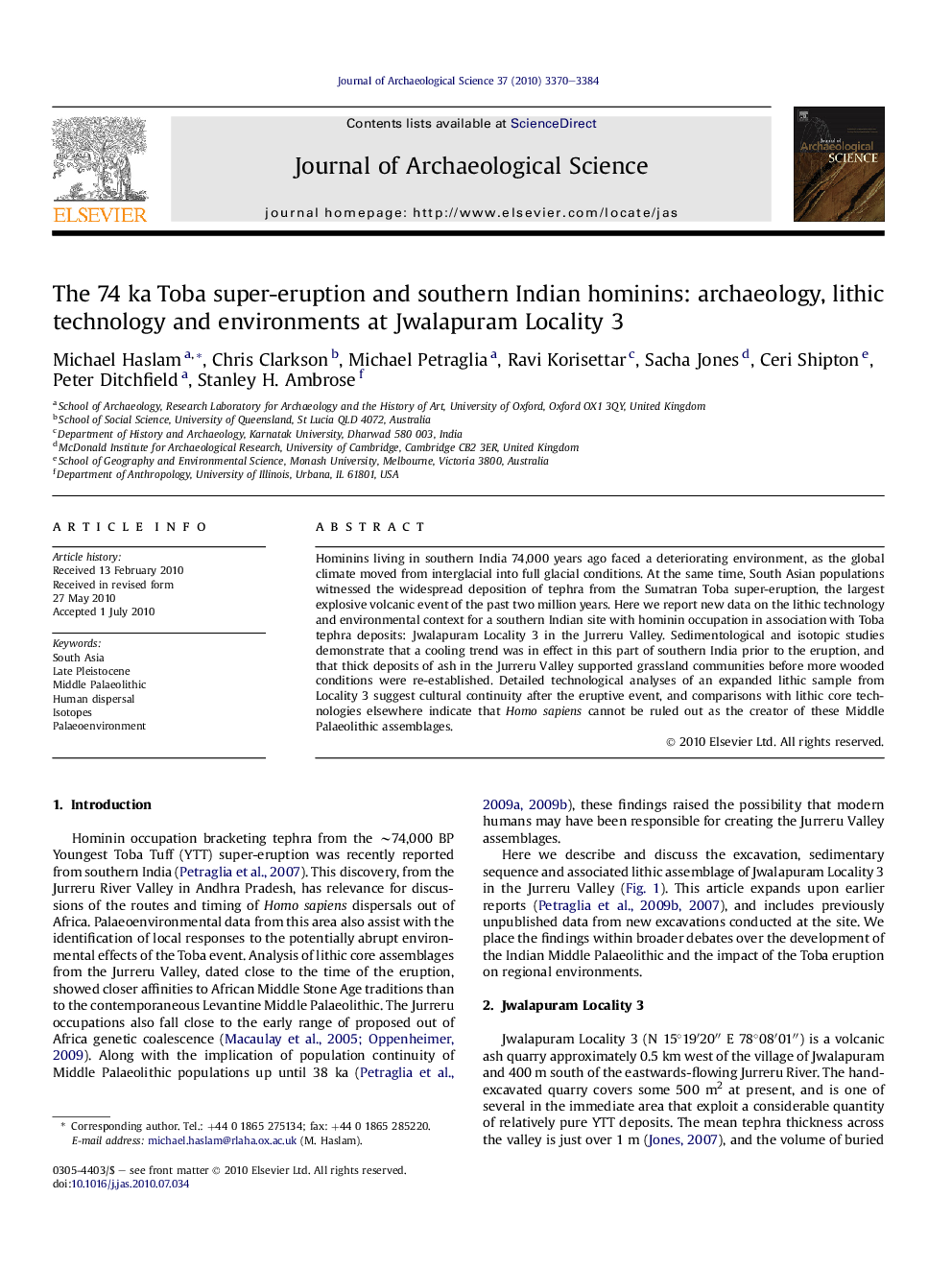| Article ID | Journal | Published Year | Pages | File Type |
|---|---|---|---|---|
| 1036617 | Journal of Archaeological Science | 2010 | 15 Pages |
Hominins living in southern India 74,000 years ago faced a deteriorating environment, as the global climate moved from interglacial into full glacial conditions. At the same time, South Asian populations witnessed the widespread deposition of tephra from the Sumatran Toba super-eruption, the largest explosive volcanic event of the past two million years. Here we report new data on the lithic technology and environmental context for a southern Indian site with hominin occupation in association with Toba tephra deposits: Jwalapuram Locality 3 in the Jurreru Valley. Sedimentological and isotopic studies demonstrate that a cooling trend was in effect in this part of southern India prior to the eruption, and that thick deposits of ash in the Jurreru Valley supported grassland communities before more wooded conditions were re-established. Detailed technological analyses of an expanded lithic sample from Locality 3 suggest cultural continuity after the eruptive event, and comparisons with lithic core technologies elsewhere indicate that Homo sapiens cannot be ruled out as the creator of these Middle Palaeolithic assemblages.
